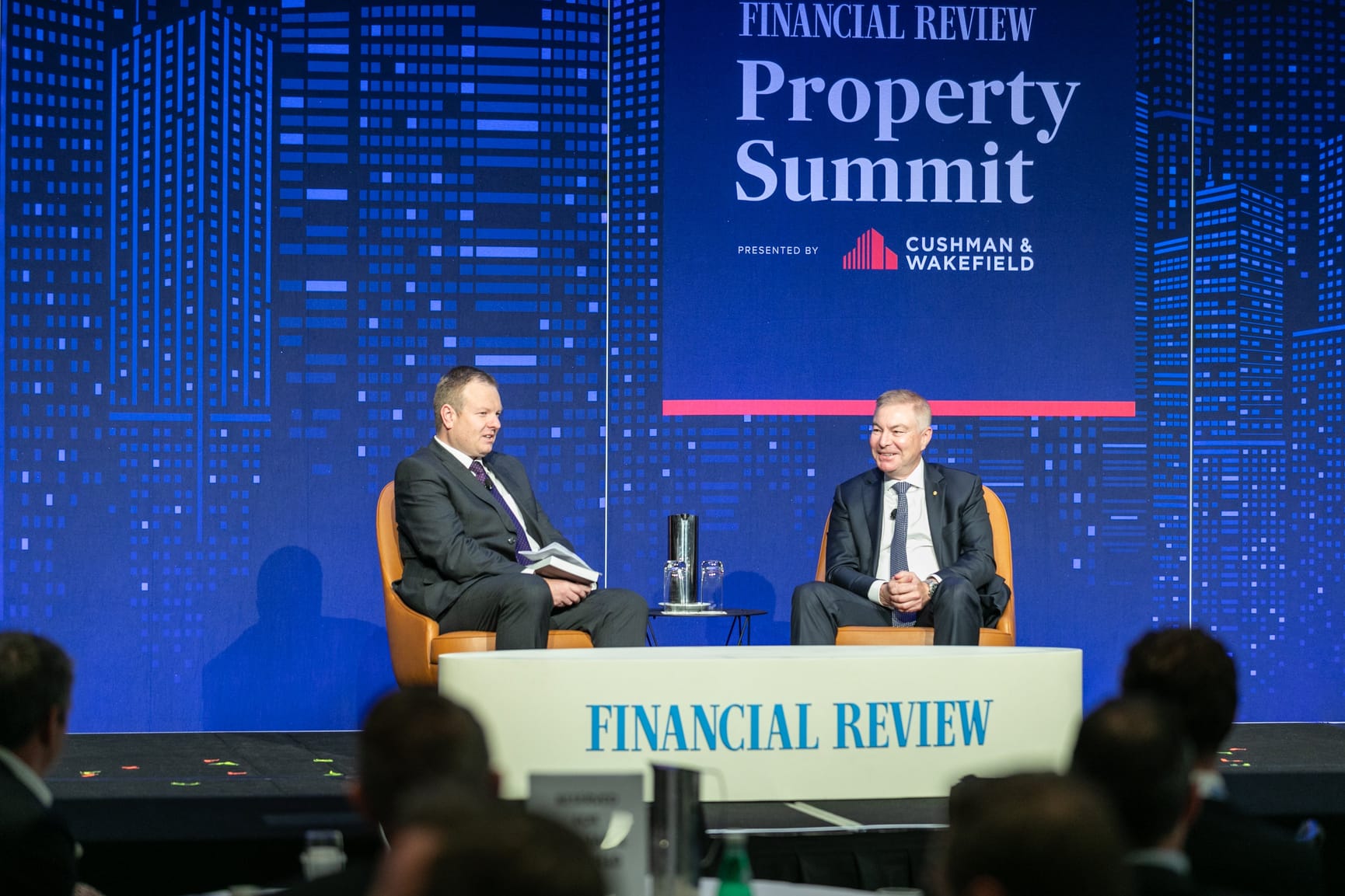

We were a proud Platinum Partner at this year’s Australian Financial Review Property Summit bringing together the industry’s most influential commentators from across the sector.
Here’s a summary of the key insights gathered by the MA Financial team including an outlook for Australia’s economy and its commercial and residential property sectors.
Day 1 - Commercial
Macro / interest rates
At a global level, Australia continues to present an attractive investment environment given its Gross Domestic Product (GDP) growth and stable political profile.
The consensus view from market participants is that we are nearing the top of the interest rate cycle. Views vary from no further rate rises to as much as two more increases in the cash rate (totaling 50 basis points). Market expectations are for interest rates to linger around the current rate for longer, managing both inflation and the weak Australian dollar.
Interest rates at current levels are nothing to fear, in the historical context they are relatively normal rates and credit remains available. Banks are acting like ‘partners’ when it comes to supporting ICRs (interest coverage ratios) that might be under pressure.
Across all commercial sectors, lengthy and costly regulatory processes remain one of the greatest impediments to increased supply, ultimately benefiting existing asset owners.
Office
Flight to quality: Demand remains robust for quality stock, and whilst incentives are elevated, prime office will remain a well-performing and highly sought after asset class.
For stock in tertiary markets, or lower grades, the future for office is more challenging. Capital is required to make much of this stock competitive. In some instances, these types of assets will be repositioned, through upgrading or conversion to residential.
Views on valuations vary, but we are likely to see a further 0-5% in valuation declines for Premium stock, and 5-20% for B-grade/tertiary locations.
The bid/ask spread in the direct market has kept transaction evidence limited and made it challenging for valuers. Expectations are for this to begin to normalise during 2024.
Retail
Operationally, retail performance has been surprisingly strong after moving through its cyclical low several years ago.
The focus is on ‘capturing customer’s time’ - this has driven an evolution of centres towards experiential offerings/food courts.
Strong population growth is expected to drive incremental demand. With very little new supply coming to market, most of the existing capital is being allocated to centre upgrades and the increase in consumer demand (driven by record migration rates) should benefit incumbent centres.
Industrial and Logistics
Industrial and logistics assets remain the ‘star’ performer. Demand clearly exceeds supply, and this is likely to drive rental growth for the near/medium term.
The market is now obviously two-tiered, with demand focused on short WALE (weighted average lease expiry) product, given the ability to access market rents, which have grown substantially. Despite the income stability long WALE assets play in an overall portfolio, they are currently out of favour with investors.
BTR (Build to rent)
The sector is still in its nascent phase, with a wide range of reforms currently being worked through.
In the long term, however, BTR presents one part of the solution to the acute housing shortage in Australia. There is deep capital, and strong demand for housing in all forms, resulting in a clear macro tailwind that is set to support the asset class in the future.
Day 2 - Residential
Australia is in the grips of a severe housing shortage, with average vacancy of just 1.2%, and rents rising substantially in all major metros.
The Federal Government’s target of 1.2 million new dwellings to be completed over five years (implying 240,000 per year) would certainly help to alleviate this problem, but with the current development run rate at just 60% of this rate, Australia remains meaningfully behind this aspirational target.
Net migration levels of 300,000-400,000 per year in the next two years is substantially ahead of the current run rate of dwelling construction.
Market analysts have mixed views on the near-term outlook for house prices, with the Bulls citing the housing shortage and migration adding more fuel to the fire, and the Bears citing interest rate rises not yet having fully impacted the economy (rising unemployment rates are usually bad for house prices).
Feedback from developers was that new construction is difficult to execute profitably, and most expect the problem to get worse before it gets better.
- Key market challenges include recent inflation in building costs and labour supply remaining limited with wages rising.
- Key regulatory challenges include significant time constraints around planning and zoning approvals as well as substantial transaction costs (the majority in stamp duty) impacting market liquidity.
Given the limited availability of labour, consensus was that current high migration levels was likely to be more of a help than a hindrance regarding the housing shortage.
Australia’s lack of institutional participation in residential ownership has a negative impact on renters’ experience. Australia has one of the shortest rental tenures in the developed world for this reason. In contrast, residential real estate is one of the largest sub-sectors in the US listed market with investors able to participate in both debt and equity.
Important Information: This material has been prepared by MA Asset Management Ltd (ACN 142 008 535) (AFSL 327 515). The material is for general information purposes and must not be construed as investment advice. This material does not constitute an offer or inducement to engage in an investment activity nor does it form part of any offer or invitation to purchase, sell or subscribe for in interests in any type of investment product or service. This material does not take into account your investment objectives, financial situation or particular needs. You should read and consider any relevant offer documentation applicable to any investment product or service and consider obtaining professional investment advice tailored to your specific circumstances before making any investment decision. Any investment in a fund managed by MA Financial Group is subject to the terms and conditions of the relevant fund offer document. This material and the information contained within it may not be reproduced or disclosed, in whole or in part, without the prior written consent of MA Asset Management Ltd. Any trademarks, logos, and service marks contained herein may be the registered and unregistered trademarks of their respective owners.
Nothing contained herein should be construed as granting by implication, or otherwise, any licence or right to use any trademark displayed without the written permission of the owner. Statements contained in this material that are not historical facts are based on current expectations, estimates, projections, opinions and beliefs of MA Asset Management Ltd. Such statements involve known and unknown risks, uncertainties and other factors, and undue reliance should not be placed thereon. Additionally, this material may contain “forward-looking statements”. Actual events or results or the actual performance of MA Asset Management Ltd or an MA Asset Management Ltd financial product or service may differ materially from those reflected or contemplated in such forward-looking statements. Certain economic, market or company information contained herein has been obtained from published sources prepared by third parties. While such sources are believed to be reliable, neither MA Asset Management Ltd, MA Financial Group or any of its respective officers or employees assumes any responsibility for the accuracy or completeness of such information. No person, including MA Asset Management Ltd and MA Financial Group, has any responsibility to update any of the information provided in this material.





